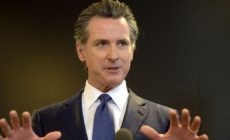-
DraftKings Promo Code: Claim $200 Bonus For NFL Late Games, Bills-Patriots - 6 mins ago
-
Jonathan Taylor rushes for his third TD of the game, extending Colts' lead over Raiders | NFL Highlights - 37 mins ago
-
Stewart Cink Throws Hat in Ring for 2027 U.S. Ryder Cup Captain - 47 mins ago
-
Newsom to seek court order stopping Trump’s deployment of California National Guard to Oregon - about 1 hour ago
-
Daniel Jones finds Michael Pittman for four-yard TD, extending Colts' lead over Raiders | NFL Highlights - about 1 hour ago
-
Dillon Gabriel Delivers Challenge to Browns Teammates After Vikings Loss - about 1 hour ago
-
Daniel Jones connects with Tyler Warren for 11-yard TD, giving Colts lead over Raiders - 2 hours ago
-
How to Watch Phoenix Mercury vs Las Vegas Aces: Live Stream WNBA Finals, Game 2, TV Channel - 2 hours ago
-
‘Can I just be a kid?’ Students shaken by immigration raids seek help from school counselors - 3 hours ago
-
ICE ordered to release man from 24/7 guard after leg break %%page%% %%sep%% %%sitename%% - 3 hours ago
Brazil’s Economy Threatened by Dire Population Trends
Brazil is facing a demographic turning point that economists warn could undermine its long-term economic stability.
The twin forces of a falling birth rate and an aging population are converging at a time when the country faces enduring structural fiscal and labor market challenges.
Why It Matters
The country experienced decades of economic expansion alongside a growing working-age population and steady improvements in public health that contributed to rising household incomes and domestic consumption.
But that demographic dividend is now being replaced by a looming burden. Brazil is growing old before it can get rich—a pattern increasingly common in middle-income countries facing delayed motherhood and shrinking family sizes due to urbanization, education access, and rising living costs.
Carl De Souza/AFP via Getty Images
What To Know
The consequences are both predictable and severe: fewer workers to sustain economic output, rising dependency ratios, and mounting pressure on pensions and public health care systems already facing resource constraints.
Plunging fertility rates across Latin America are likely to strain public finances and social stability as the cost of caring for the elderly surges, as The Economist reported in January 2024.
Brazil, the world’s 10th largest economy, is seeing a sustained decline in births. The total fertility rate fell to 1.57 in 2023—well below the 2.1 threshold needed to maintain population stability.
Annual births dropped to 2.6 million in 2022, down from 3.6 million in 2000, according to the country’s official statistics agency.
Meanwhile, the agency has projected the population will stop growing by 2041.
The proportion of elderly Brazilians—those aged 60 and above—has already more than doubled between 2000 and 2023, reaching over 15 percent of the population. That figure is expected to more than double again before 2070.
What People Are Saying
Braulio Borges, senior economist at economic research center FGV Ibre, told Pension Policy International: “Population growth has already been slowing from 2.5 percent annually in the 1970s to 2.1 percent in the 1980s, 1.6 percent in the 1990s, 1.2 percent from 2001 onwards, and in the last three or four years it’s at 0.4 percent, well below the 0.7 percent projected in 2018…
“Based on the population projections from the IBGE’s [Brazilian Institute of Geography and Statistics] August revision, by the end of this decade, growth will slow to 0.3 percent, which is expected to continue. This less favorable demographic trend has implications that need to be considered in discussions.”
The World Bank wrote in an April 2025 report: “To sustain growth amid demographic changes, further structural reforms are needed to enhance productivity, improve business environment, promote innovation and openness to trade, strengthen learning outcomes, and boost resilience to climate change.
Source link































